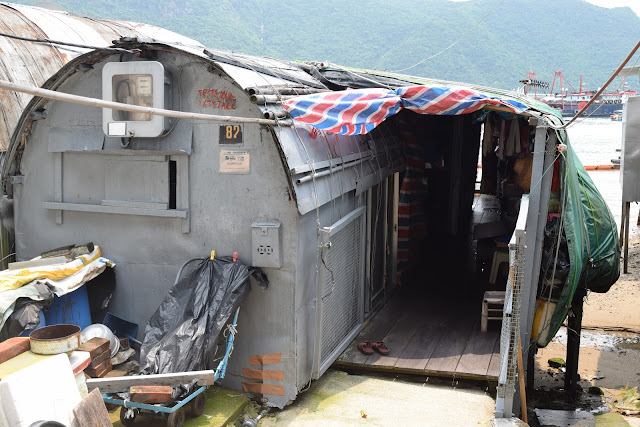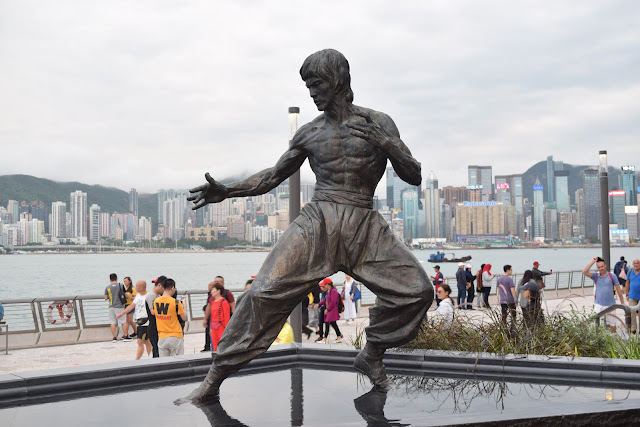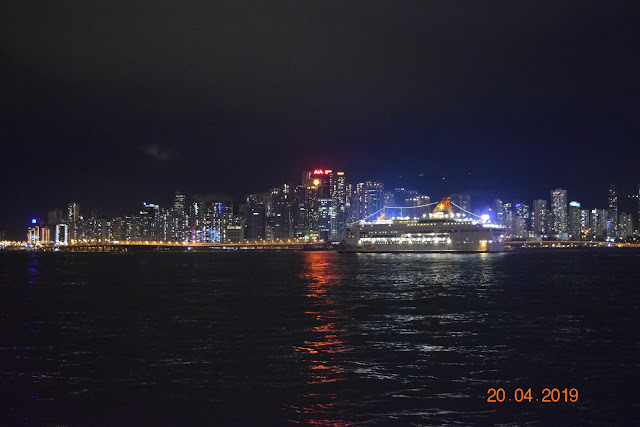4 Days Hong Kong Adventure
20 - 23 April 2019
From Shenzhen we took the high speed train from Futian Station to Kowloon West Terminal in HK. Travel time is only 14m. This is our 3rd visit to HK, having been here in 1997 & 2011. This time we ventured out further to Lantau Island and visited the Tai O Fishing Village and Ngong Ping Village. We also took the iconic double decker tram from Shau Kei Wan to Kennedy Town a journey which takes around one and a half hours. The journey on the tram allows us a leisurely tour around Hong Kong Island's major streets and to have a glimpse of the local life. The fare is a mere HK$2.30. We also took a stroll in Hong Kong Park which is a place of tranquility in the neighborhood with luxury hotels, banks and chaos of Hong Kong's urban jungle.
Day 1 - 20 April 2019
Upon arrival at Kowloon West Terminal in Hong Kong, we walked to Austin Station and took the subway to East Tsim Sha Tsui Station and then walked through the tunnel to Tsim Sha Tsui Station where we exit to our hotel.
After checking into the hotel we walked to the Avenue of Stars which unfortunately is under renovation. Anyway, we stayed there until the Symphony of Lights show starts at 8pm.
View of the buildings in Hong Kong island just before sun set.
Statue of the late Bruce Lee is the only one left and which have been relocated from its original place at the at Avenue of Stars.
View of the buildings at Hong Kong island just after sunset
View of the buildings in Hong Kong island at night and during the Symphony of Lights show.
Day 2 - 21 April 2019
After breakfast we took the subway to Tung Chung station and board the bus 11 to Tai O Fishing Village. The journey took approximately 50 minutes.
Tai O is home to the Tanka people, a community of fishermen who have built their houses on stilts above the tidal flats of Lantau Island for generations. These unusual structures are interconnected, forming a tightly knit community that literally lives on the water
 |
| Outside Tung Chung subway station |
 |
| Giant squids |
As you walk around the village, you will see seafood drying in the sun and shops full of the final product. Villagers have been selling dried seafood in Tai O for over two generations.
 |
| Various dried sea foods are on sale |

 |
| Boat rides are offered to surrounding islands |
 |
Some fishermen are selling their catch directly from their boats
|
The Tai O Market is more than just food stalls. What it’s really famous for is dried seafood, especially the traditional salted fish. No wonder the whole market has a very strong fish smell!
 |
One of the small dwellings in Tai O. Probably can accommodate one or two persons
|
 |
| Scrimp paste left to ferment in big containers |
 |
| Tai O Heritage Hotel is at the background |
The Tai O Heritage Hotel is a former police station situated on a small hill next to the Tai O Ferry Pier. The building was converted into the hotel in 2012, and includes nine colonial-style rooms and suites with sea views and a roof-top restaurant.
If you looking for something more classy, you can head down to the Tai O Heritage Hotel. Enjoy dining in the hotel’s Tai O Lookout Restaurant that has a beautiful glass roof. And then after that, you can stay back for the afternoon high tea.
We spent spent one and a half hours walking around the market and village houses built on stilts and capture some of the scenery and lifestyle in the village
 |
| This bakery is famous for their Tai O donuts |
 |
The walls of these houses are covered with stainless steel to prevent rusting
|
Later we take the bus 21 from Tai O Village terminus to Ngong Ping Village terminus, a much shorter distance than if we were to take the bus 11 to Tung Chung station and take the cable car up to Ngong Ping Village.
The main attractions in Ngong Ping Village is the Big Buddha and Po Lin Monastery.
 |
| Entrance to Ngong Ping Village |
The Ngong Ping Village was created at the top of the Ngong Ping plateau to accommodate the influx of tourists now flocking to the Big Buddha and the Npong Ping Cable Car and is therefore fairly new. It has somewhat of a theme park atmosphere, complete with souvenir shops, tea houses as well as fast food outlets offering both Western and Asian fare, including Subway and Starbucks
The Big Buddha is sometimes not visible from the distance due to the thick mist surrounding it.
It is quite tiring climbing up the stairs to reach the top.
 |
| The air is very cold but fresh at the top |
 |
| View of Po Lin Monastery from the Big Buddha |
The Ngong Ping 360 cable car is a very popular choice to go up to Ngong Ping Village from Tung Chung Station due to its enchanting scenery along the way. However, the mist is very thick today which may dampen the view. You can see the long queue at the Ngong Village cable car station waiting to board the cable car back to Tung Chung Station
Later we took the subway to Mongkok Station and walked to the Ladies Market for some bargain hunting. Managed to buy six Polo T-Shirts for myself at a very good price.
 |
The six Polo T-Shirts that I bought from a factory outlet stall in Ladies Market
|
Day 3 - 22 April 2019
After breakfast we took the subway to Central to board the double decker tram to Shau Kei Wan Station. We explored the Shau Kei Wan market which is near to the tram terminal. We had roast goose lunch in of the nearby restaurants before taking the tram from Shau Kei Wan to the Kennedy Town which is at the other end of the line. The whole journey takes one and a half hours and costs only HK$2.30 which we pay when we get down.
Hong Kong's tram system is one of the earliest forms of pubic transport in the metropolis, having opened in 1904 under British rule. It has used electric trams since its inauguration, and has never used horse or steam power. In addition to being used by commuters, the system is popular with tourists, and is one of the most environmentally friendly ways of travelling in the city. It owns the world's largest operational double-decker tram fleet, and is a very rare example of a tram that uses them exclusively
Though the trams are old they are well painted with various advertisements, including one adverting the Malaysian bank, Public Bank, which we find has many branches in Hong Kong
During our trip from Shau Kei Wan to Kennedy Town we sat at the front of the upper deck to have a good view of the scenery along the way
 |
This is a double decker tour tram which we believe cost much more to travel
|
From Kennedy Town Station we took the subway to Admiralty Station and walked to Hong Kong Park. We first visited the Tea Museum which was about to close for the day.
An oasis of green in an urban setting, Hong Kong Park is outstanding in the way its design blends in with the surrounding natural landscape. The park features an aviary, a greenhouse, the Flagstaff House Museum of Tea Ware, the Hong Kong Visual Arts Centre, fountains, lily ponds, playgrounds, a restaurant and even a marriage registry.
Also noteworthy is the way flowing water has been employed as a thematic motif to link the different features of the park by waterfalls, streams, ponds and cliffs made from artificial rocks. The park is also a great vantage point to take some snaps of the surrounding skyscrapers.
Day 4 - 23 April 2019
After breakfast we checked out from the hotel and took the subway to Kowloon Bay Station and board the green shuttle bus to Kai Tak Cruise Terminal for our 7N Royal Caribbean Cruise from Hong Kong to Singapore.








































































No comments:
Post a Comment